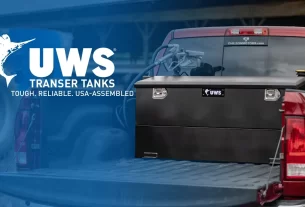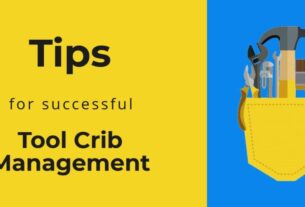Spline tooling is an essential component of precision machining, enabling manufacturers to produce intricate and complex parts with unparalleled accuracy. Whether you’re a seasoned engineer or a novice machinist, understanding the ins and outs of spline tooling is crucial for achieving top-quality results. In this comprehensive guide, we’ll explore everything you need to know about spline tooling, from its basic principles to advanced techniques and applications.
What Is Spline Tooling?
At its core, spline tooling refers to the use of specialized cutting tools that create splines – that is, ridges or teeth on the surface of a workpiece. Splines are commonly used in mechanical engineering, particularly in power transmission systems such as gearboxes and driveshafts. By using spline tooling, manufacturers can produce precise and consistent splines that meet exact specifications for size, shape, and tolerance.
Types of Spline Tooling
There are several types of spline tooling available, each suited to specific machining tasks and workpiece materials. Some common types include:
1. Gear Hobbing Cutters: These are cylindrical cutting tools that use multiple teeth arranged in a helical pattern to create gears or splines on a workpiece. They are typically used for high-volume production runs and can achieve high levels of precision and repeatability.
2. Broaches: Broaches are long, thin cutting tools with teeth that gradually increase in size along their length. They are ideal for creating keyways and other internal profiles on workpieces.
3. Shaper Cutters: Shaper cutters use straight edges to generate linear motion along the length of a workpiece, creating splines or other profiles as they move. They are highly versatile but require significant setup time and expertise to use effectively.
4. Thread Milling Cutters: Thread milling cutters use spiral flutes to create threads or splines on a workpiece. They can be used on a wide range of materials and are particularly effective for creating complex shapes or geometries.
Regardless of the type of spline tooling you choose, it’s essential to select the right tool for the job and ensure that it is properly maintained and calibrated.
Factors Affecting Spline Tooling Performance
Several factors can impact the performance of spline tooling, including:
1. Workpiece Material: The hardness, toughness, and other properties of the workpiece material can affect how well a spline tool performs. Softer materials may require less aggressive cutting speeds and feeds, while harder materials may require more specialized tool coatings or geometries.
2. Tool Geometry: The shape and design of the cutting edge can have a significant impact on how well a spline tool performs. Factors such as rake angle, relief angle, and chip breaker geometry all play a role in determining how effectively the tool cuts through the workpiece material.
3. Cutting Parameters: The cutting speed, feed rate, and depth of cut all influence how well a spline tool performs. Operators must carefully balance these parameters to achieve optimal results without damaging the tool or workpiece.
4. Machine Rigidity: The rigidity and stability of the machine itself can affect how well a spline tool performs. Vibration or other sources of instability can cause chatter, poor surface finish, and other issues that compromise part quality.
Tips for Successful Spline Tooling
To get the most out of your spline tooling, consider implementing these best practices:
1. Choose the Right Tooling: Selecting the right type of spline tool based on your specific application is critical to achieving optimal results. Consult with a trusted supplier or manufacturer to identify the best option for your needs.
2. Maintain Your Tools: Regular maintenance is essential to ensure that your spline tools remain sharp and effective over time. This includes cleaning, sharpening, and replacing worn or damaged components as needed.
3. Monitor Cutting Parameters: Keeping a close eye on your cutting parameters can help you identify issues early on and adjust accordingly. Use monitoring systems to track performance and make adjustments as necessary.
4. Optimize Machine Performance: Ensuring that your machine is properly calibrated and maintained is critical to achieving optimal spline tooling results. Regular inspections, calibration checks, and other maintenance tasks can help keep your machine running smoothly.
Applications of Spline Tooling
Spline tooling has many applications across a wide range of industries, from automotive to aerospace to medical devices. Some common uses include:
1. Gearing Systems: Splines are commonly used in the design of gears and gearboxes, enabling precise power transmission with minimal wear and tear.
2. Driveshafts: Driveshafts often incorporate splines to transfer torque between the engine and wheels, ensuring smooth and reliable operation.
3. Hydraulic Systems: Many hydraulic systems use splines to connect valves, pumps, and other components, providing precise control over fluid flow.
4. Medical Devices: Spline tooling is also used in the manufacture of medical devices such as implants and prosthetics, where precision and reliability are essential.
Conclusion
Spline tooling is a critical component of precision machining, enabling manufacturers to produce complex parts with unparalleled accuracy. By understanding the principles of spline tooling and implementing best practices for selection, maintenance, and optimization, machinists can achieve top-quality results across a wide range of applications. Whether you’re working in automotive manufacturing or medical device production, mastering spline tooling is an essential skill for any precision machinist.
References:
1. “Gear Hobbing Cutters.” Sandvik Coromant.
2. “Broaching (metalworking).” Wikipedia.
3. “Shaper Cutters.” Star SU LLC.
4. “Thread Milling vs Tapping: Advantages & Disadvantages.” Harvey Performance Company.
5. “Spline Manufacturing Methods.” Power Transmission Engineering.
6. “Spline Cutting vs. Gear Hobbing for Gears, Splines and Timing Pulleys.” Norton Abrasives.
7. “Machining of Internal Splines with Broaching Tools.” ScienceDirect.
8. “Hydraulic Fittings Selection Guide.” Engineering360.
9. “Medical Device Manufacturing: Challenges and Opportunities.” Deloitte Insights.




